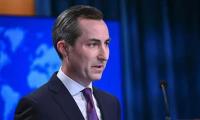Essential food and medicines remain unaffordable for many. The rising costs of food, fuel, and medicine in Rawalpindi have made essential items unaffordable for vulnerable groups such as pregnant women, children, and the sick. This is a significant concern, as many individuals struggle to afford these necessities due to various economic constraints.
“A large portion of the city’s population lives below the poverty line, making it challenging for families to prioritize nutritious food or access quality medicines. Basic food staples like wheat, rice, and lentils are often prioritized over fruits, vegetables, dairy, and protein-rich foods due to their high costs,” says Parsa Batool.
“The costs of fresh fruits, vegetables, and protein, which are crucial for a balanced diet, have skyrocketed in recent years, making it nearly impossible for lower-income families to afford them,” states Zartaj Zahra.
“The availability of nutritious food in economically disadvantaged areas is limited. Markets in these localities often lack a sufficient supply of diverse foods that meet the nutritional needs of pregnant women, children, and the sick, leaving many without reliable sources of vitamins and essential nutrients,” explains Noor Fatima.
“Even when public health campaigns stress the importance of medicines, essential healthcare costs remain unaffordable for many families. Although there are public health programs in the city, the quality of healthcare services in government-run hospitals is often inadequate, and many essential medicines are priced out of reach,” notes Zillay Huma.
“Health insurance is not widely available in the city, and most people must cover medical expenses out of pocket. For those struggling with poverty, deciding between food and healthcare becomes a significant challenge,” adds Sheher Bano.
“Media campaigns highlighting the importance of nutrition often fail to address the root causes of poverty and the lack of access to resources. These campaigns present ideal scenarios rather than reflecting the reality of financial constraints faced by common individuals. They underscore the gap between recommended practices and what is realistically attainable for poor families,” suggests Naveera Batool.
Children wearing Santa Claus outfits take part in a Christmas peace rally in Karachi on December 17, 2023. —...
RWMC workers seen in this undated image.— Facebook@www.rwmc.org.pk/File Rawalpindi: Member of Punjab Assembly, PP-4...
A prepared table shows a cake, cutlery and the Christmas tree on December 21, 2023. —...
An image from the MoU signing ceremony between University of Sargodha and Universities in Tianjin, China on December...
A group photo from the seminar arranged by Islamabad Institute of Conflict Resolution - IICR. —...
Politician Mushahid Hussain and journalist Nasim Zehra seen at ninth ‘Adab Festival Pakistan’ . —...







